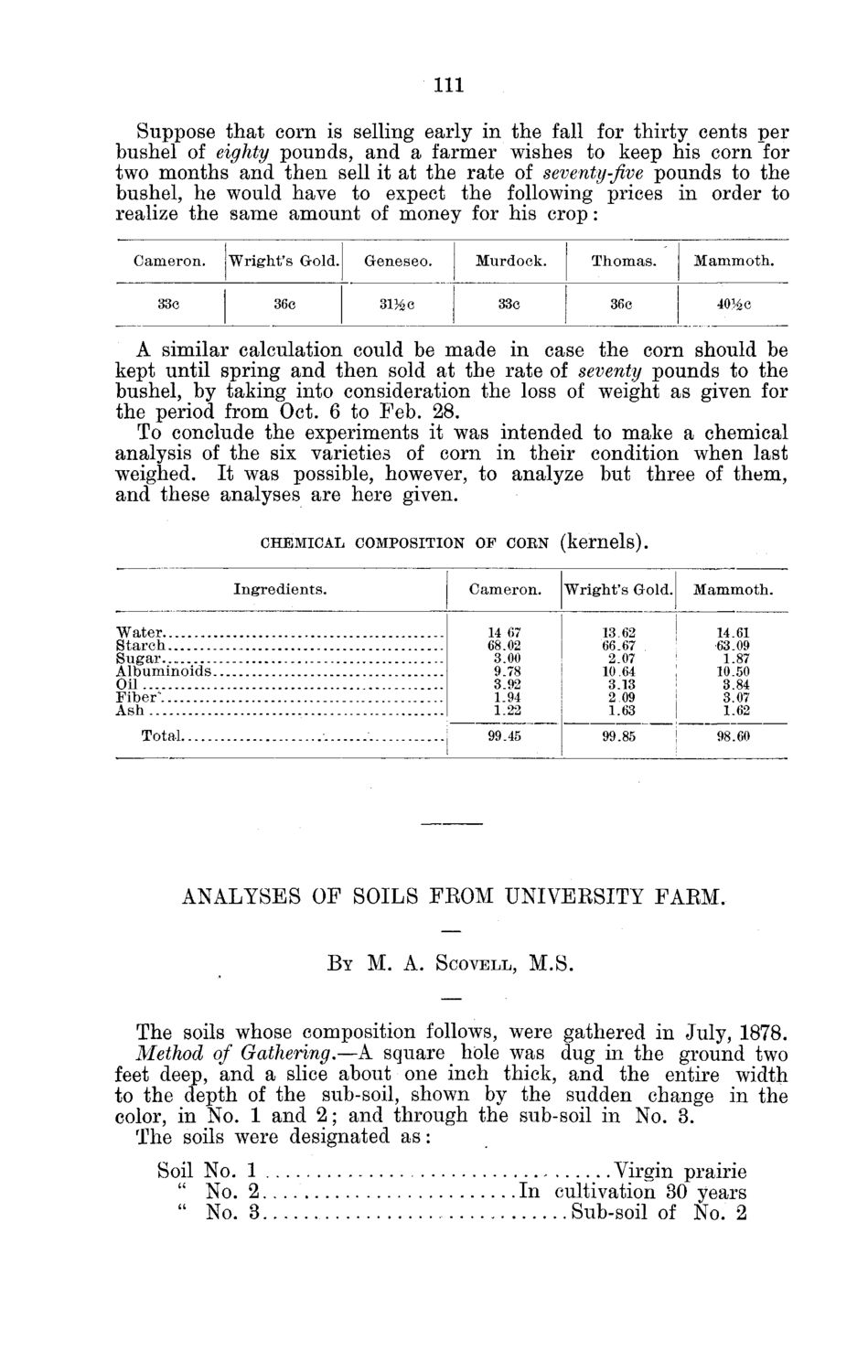Caption: Board of Trustees Minutes - 1880
This is a reduced-resolution page image for fast online browsing.

EXTRACTED TEXT FROM PAGE:
Ill Suppose that corn is selling early in the fall for thirty cents per bushel of eighty pounds, and a farmer wishes to keep his corn for two months and then sell it at the rate of seventy-five pounds to the bushel, he would have to expect the following prices in order to realize the same amount of money for his crop: Cameron. 33c W r i g h t ' s Gold. 36c Geneseo. 31% c Murdock. 33c Thomas. 36c Mammoth. 40% c A similar calculation could be made in case the corn should be kept until spring and then sold at the rate of seventy pounds to the bushel, by taking into consideration the loss of weight as given for the period from Oct. 6 to Feb. 28. To conclude the experiments it was intended to make a chemical analysis of the six varieties of corn in their condition when last weighed. It was possible, however, to analyze but three of them, and these analyses are here given. CHEMICAL COMPOSITION OF COEN Ingredients. Water Starch Sugar Albuminoids Oil Fiber" Ash Total Cameron. 14 67 68.02 3.00 9.78 3.92 1.94 1.22 99.45 (kernels). W r i g h t ' s Gold. 13.62 66.67 2.07 10.64 3.13 2 09 1.63 99.85 Mammoth. 14 61 63.09 1 87 10.50 3 84 3.07 1 62 98 60 ANALYSES OF SOILS FEOM UNIVEKSITY FAKM. BY M. A. SCOVELL, M.S. The soils whose composition follows, were gathered in July, 1878. Method of Gathering.—A square hole was dug in the ground two feet deep, and a slice about one inch thick, and the entire width to the depth of the sub-soil, shown by the sudden change in the color, in No. 1 and 2 ; and through the sub-soil in No. 3. The soils were designated a s : Soil No. 1 " No. 2 " No. 3 Virgin prairie In cultivation 30 years Sub-soil of No. 2
|